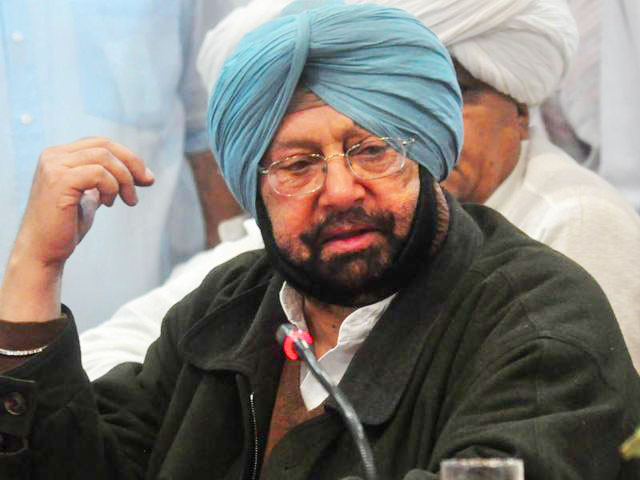Chandigarh, June 30:
In a bid to overhaul and streamline the system, the Captain Amarinder Singh led Punjab Government on Friday announced reduction in the size of its legal team to almost half its previous strength, while choosing to appoint more experiences professionals to effectively clear the mounting pendency of the State-related legal cases in various courts.
From the existing 215, the number of law officers has been brought down to 154, of which 121 names were also announcedon Friday by the office of state Advocate General Atul Nanda.
The state government, acting on the recommendation of Advocate General, decided to overhaul the legal team in pursuance of the Supreme Court directives in the case of State of Punjab & Ors. Vs Brijeshwar Singh Chahal & Anr. – 2016 6 SCC 1, and as per the provisions of Section 3(2) and 3(3) of The Punjab Law Officers (Engagement) Act, 2017, according to an official spokesperson.
The spokesperson revealed that of the 121 new Law Officers appointed, 25 are Additional AGs, 49 Assistant AGs, 30 Deputy AGs and 17 Sr. Deputy AGs.
The move would make the state’s legal department more transparent, efficacious and cost-effective, according to the official spokesperson, who said that AG Atul Nandu had made a detailed and judicious work assessment of the existing and potential work load to arrive at a prudent figure.
Not only will the streamlined structure help boost efficiencies and clear the backlog of cases related to the State of Punjab in various courts, it will also bring in the much-needed professionalism in the system, according to Nanda. Under the new system, specific law officers in various positions will be tasked with specific duties across different courts, thus enhancing productivity, currently seriously lacking in the system, which has several inexperienced lawyers, many of whom have never attended the courts.
The overhauling of the team is in strict adherence to the various parameters laid down by the apex court’s directives to the states of Punjab and Haryana. The court had asked the states to undertake a realistic assessment of their need in each category in which State Counsel are proposed to be appointed. The court had further directed that based on the assessment so made, the States shall constitute a Selection Committee to select suitable candidates for appointment as State Counsel. The Secretary, Department of Law, in each State shall be the Member-Secretary of the Selection Committee, as per the apex court’s directive.
Based on his calculations, Nanda had concluded that while 123 lawyers ought to be engaged in Chandigarh, another 31 should be taken on board to tackle the pending cases in Delhi, across various categories. These included Sr. Additional Advocate General (3 in Chandigarh), Additional Advocates General (16 in Delhi, 23 in Chandigarh), Sr. Deputy Advocate General (22 in Chandigarh), Assistant Advocate General (6 in Delhi, 43 in Chandigarh) and Advocate on Record (5 in Delhi).
While Chandigarh covers pendency of cases in the High Court of Punjab and Haryana, as well as Tribunals (other than District Courts), New Delhi encompasses the Supreme Court, the Delhi High Court and several national/central tribunals.
In his recommendations to the state government, the AG had pointed out that the office of the Advocate General/Law Officers of the State of Punjab are broadly divided in two geographical areas, these being the Legal Cell located at New Delhi and the office of the Advocate General located in the premises of the High Court. Further, he said, the geographical distance between the two places required a separate set of Law Officers located at these two areas separately and consequently a separate assessment of work and engagement of lawyers.
Elaborating on the total requirement, the AG had pointed out that with an average of 25000-26000 fresh cases filed every year (2012-2015), and the figure escalating by almost 27% in 2016 to 33,000 cases, there was drastic need to scale up the number of law officers as this level of increase was expected to be maintained, if not further enhanced, over the next five years. In addition, there are cases which are decided every year, for which the figure was expected to go up 25% (to touch about 20,000) in the first quarter of 2017 alone.
The AG also found a massive 114% increase in the first quarter of 2017 in the pending cases which were to be argued for/just prior to the stage of admission, and required legal intervention. Cumulatively, this figure has gone up by 428% since 2012 – from 7,000 to 30,000 cases.
Taken collectively, this implies a whopping 160% increase in workload over the period 2012-17, which would translate into an addition, perhaps, of seven courts, taking the number of courts to be attended to about 45. The AG further assessed that taking a thumb rule of 3 law officers per court itself yields a number of 135 law officers on the current pendency. And factoring in an escalation rate of 160%, this would require an unwieldy figure of 432 law officers.
However, in line with the SC directive, the AG decided to go in for a more realistic assessment of the team strength. Thus, after examining the court/bench wise requirement for law officers to provide for better and more optimum utilisation of resources and lawyers, the AG had proposed engagement of law officers across the two regions of New Delhi and Chandigarh as per the workload across criminal and civil matters.
Nanda thus recommended to the state government engagement of 70 law officers on the civil side and 50 on the criminal side, with 2-3 supervisory officers, in Chandigarh. Similarly, he suggested 31 law officers in the state government’s Legal Cell in New Delhi, to address and clear the piling pendency of cases.




 Driving Naari Programme launched in Chandigarh
Driving Naari Programme launched in Chandigarh































